Siliqua patula (Dixon, 1788)Common name(s): Razor clam, Pacific razor clam, Northern razor clam, Giant pod |
|
| Synonyms: | 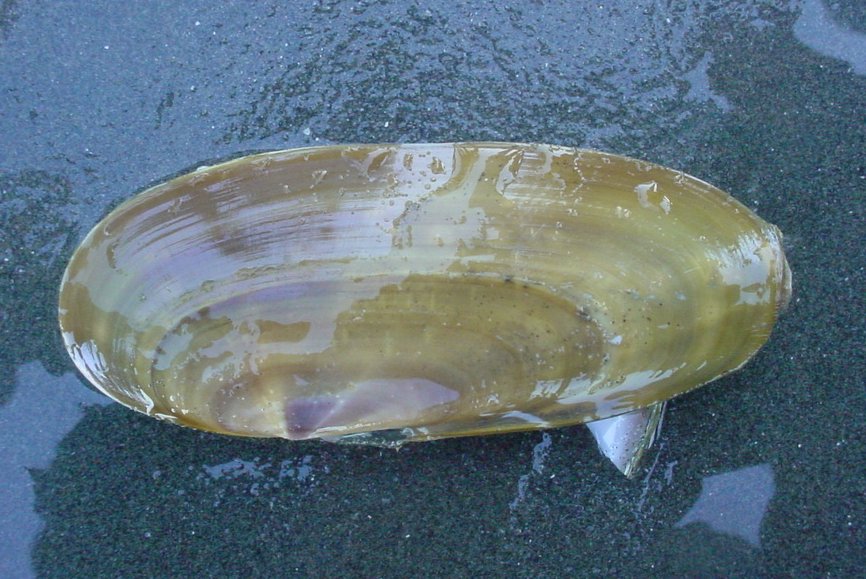 |
| Phylum Mollusca
Class Bivalvia Subclass Heterodonta Order Veneroida Family Cultellidae |
|
| Siliqua patula, about 11 cm long, at Kalaloch, WA. The hinge is on the lower side in this photo and the foot is starting to be extended for digging | |
| (Photo by: Dave Cowles, July 2005) | |
How to Distinguish from Similar Species: The other related species in this area are less than 5 cm, subtidal, and with alternating colored bands on the shell. The jackknife clams (genus Tagelus and Solen) are also smaller and much more elongated.
Geographical Range: Bering Sea, Alaska to Pismo Beach, CA (Rarely seen in central CA)
Depth Range: Intertidal to 55 m
Habitat: Low intertidal and subtidal on flat, sandy exposed beaches. Burrows deeply and rapidly into the sand.
Biology/Natural History: Spawns late spring and summer. In Washington spawning is simultaneous (the same day) along several kilometers of beach, triggered by a sudden rise in water temperature to about 13C (usually in late May or June). Intensity of spawning varies dramatically from year to year. In Alaska they spawn every year, but not simultaneously, in July and August. Larvae are pelagic for about 8 weeks. Live about 12 years in Washington. This species is frequently dug by humans for food, but as with most species on the open coast, is susceptible to paralytic shellfish poisoning (PSP, toxic to humans) due to ingesting too many dinoflagellates such as Gonyaulax during the summer. The animal typically remains just below the surface, with a dimple in the sand above the siphon. When disturbed, for example by human footsteps approaching, it begins digging rapidly. Predators include flatfish such as the starry flounder and the Dungeness crab Cancer magister. May have a commensal nemertean worm, Malacobdella grossa, or the pea crab Pinnixia faba in its mantle cavity.
These clams are called razor clams for a reason. If while a clam digger grasps the ventral side of the shell in the rush to catch up with the rapidly-digging clam, he may pay for it with a deeply cut hand. Fortunately, the clams always orient with the hinge toward the ocean so if a digger will always reach into the hole on the oceanward side he will be safe from cuts (but will still have to dig fast!)
| Return to: | |||
| Main Page | Alphabetic Index | Systematic Index | Glossary |
References:
Dichotomous Keys:Flora and Fairbanks, 1966
Kozloff 1987, 1996
Smith and Carlton, 1975
General References:
Brusca
and Brusca, 1978
Carefoot,
1977
Harbo,
1997
Harbo,
1999
Johnson
and Snook, 1955
Kozloff,
1993
McConnaughey
and McConnaughey, 1985
Morris,
1966
Morris
et al., 1980
Niesen,
1994
Niesen,
1997
Ricketts
et al., 1985
Sept,
1999
Scientific Articles:
Web sites:
General Notes and Observations: Locations, abundances, unusual behaviors:
This species had phenomenal recruitment at Kalaloch in 2015. Some places in the sand were filled with so many juvenile clams that one could hardly step between their siphons, and the entire sand was riddled with holes.
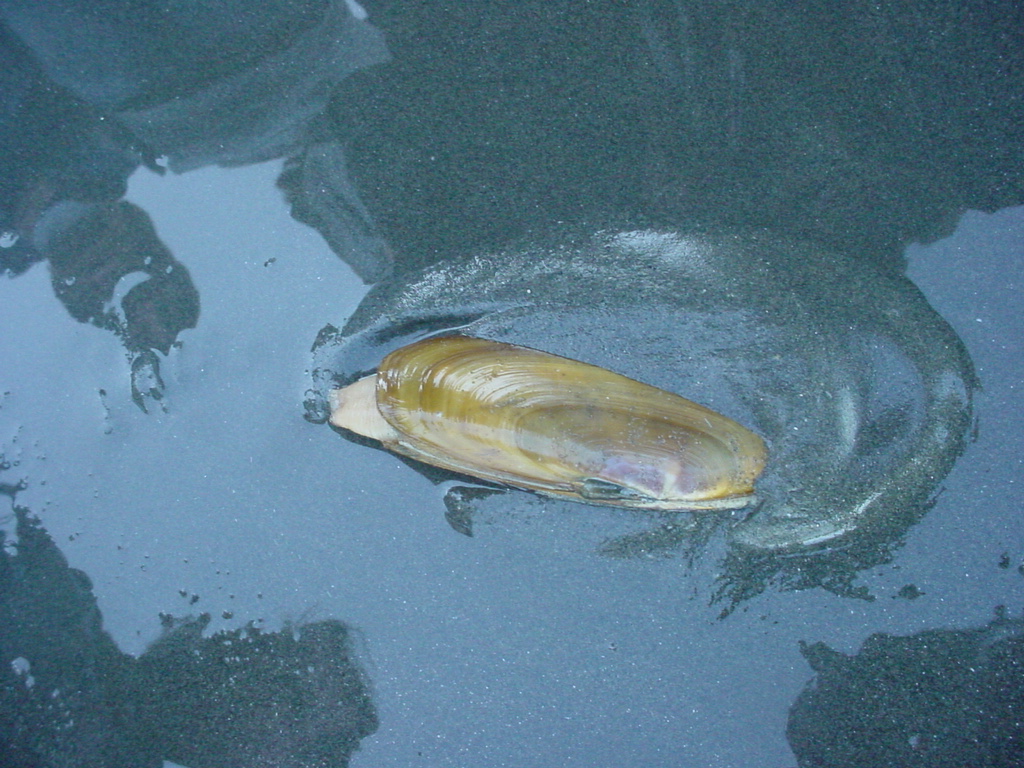
This species is a rapid digger, as shown by this series of photos taken
within a short time of one another. In the photo above, the
posterior
end with the siphons is to the left.
The foot has been extended out of the anterior end of the shell on
the right, pressed into the sand, expanded, and is being retracted to
pull
the shell downward.
In the photo below the clam has pulled itself farther into the sand
and is proceeding to bury itself out of sight.
Photos on low intertidal beach at Kalaloch, WA by Dave Cowles July,
2005
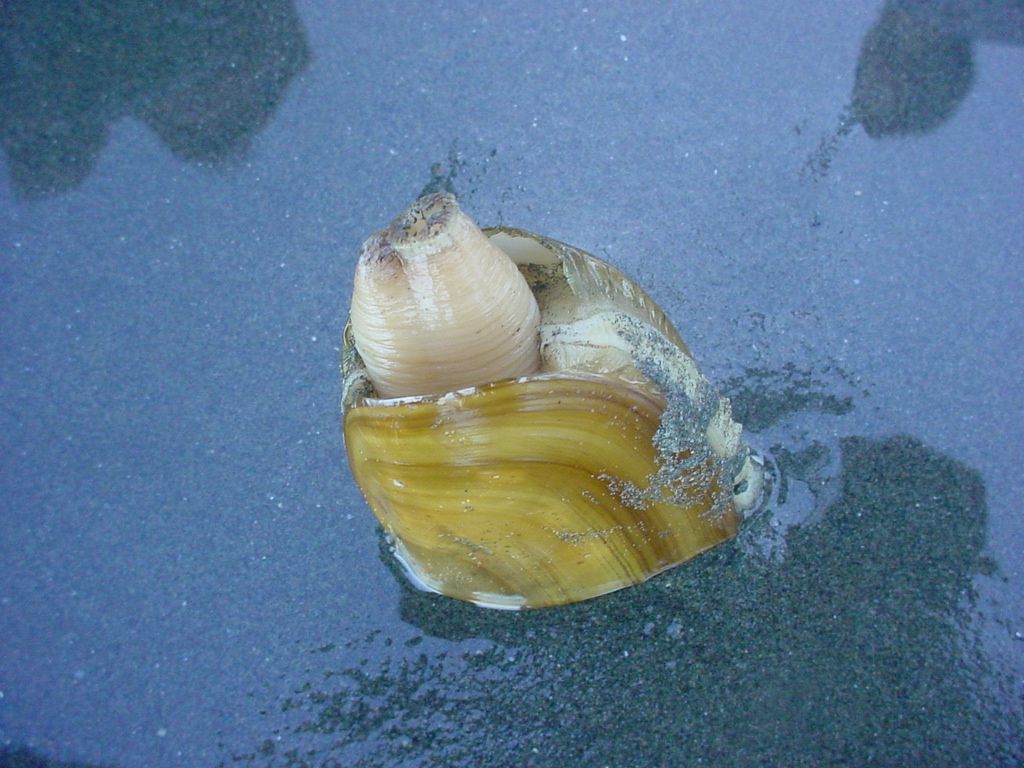
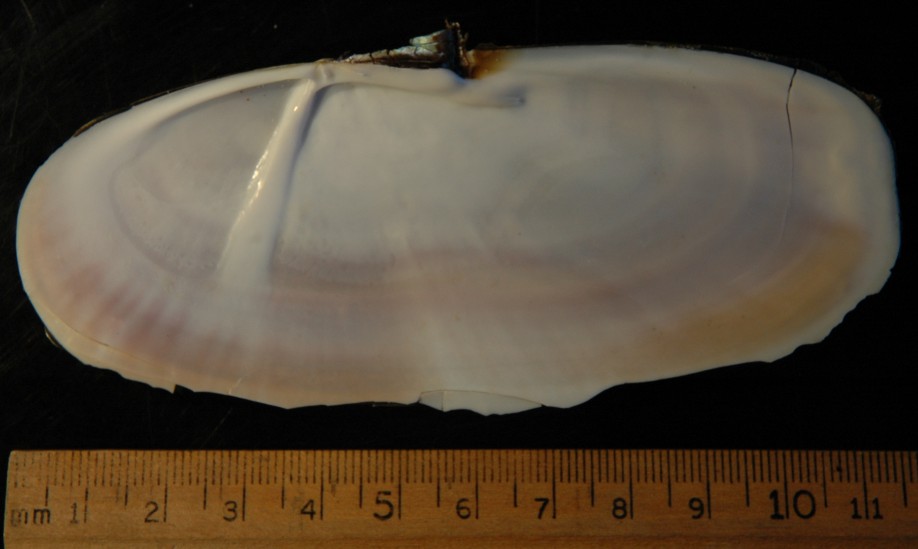
The shell is white with a pinkish tinge inside. It has a
supporting
rib running from the hinge toward the ventral side at about a 30 degree
angle.
The shell is thin and fragile.
Photo by Dave Cowles, October 2005
| The photos below are of a small individual (8.5 cm long) found on the beach at Monterey Bay. The left valve is broken. Photos by Dave Cowles, August 2010 |
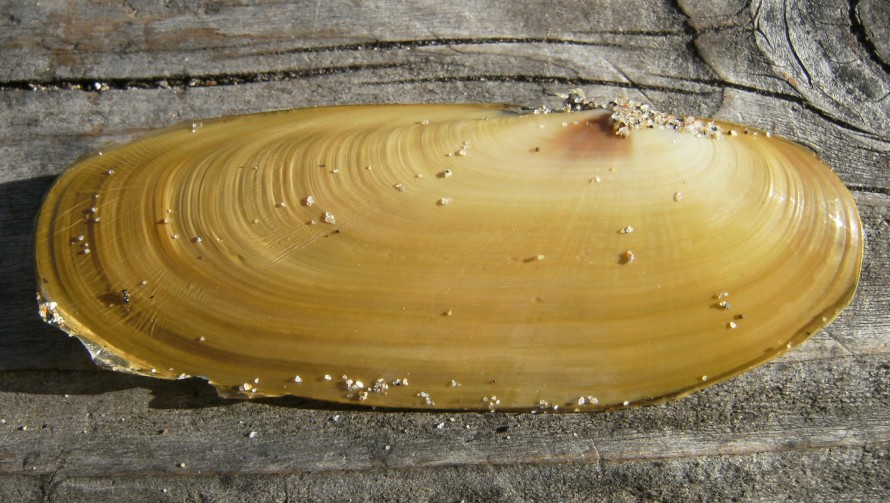 |
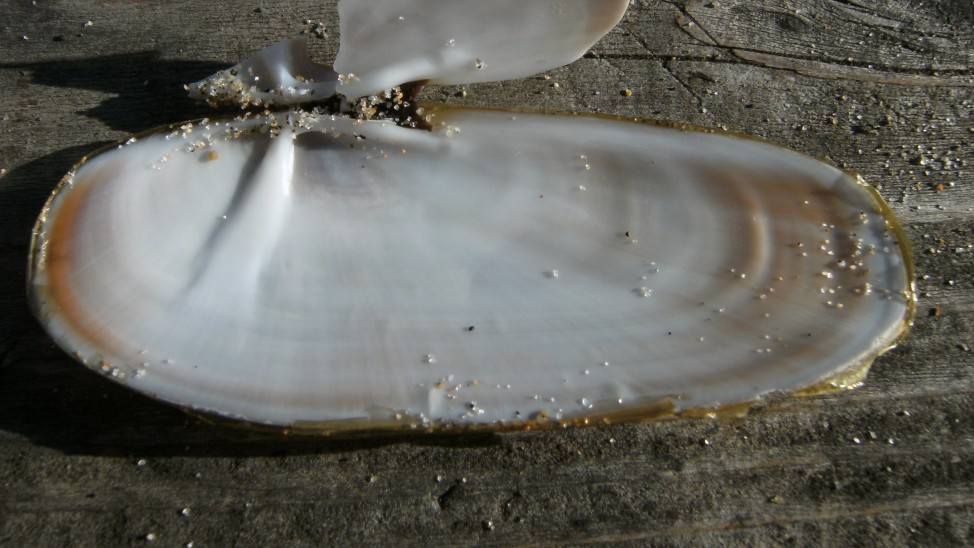 |
Authors and Editors of Page:
Dave Cowles (2005): Created original page